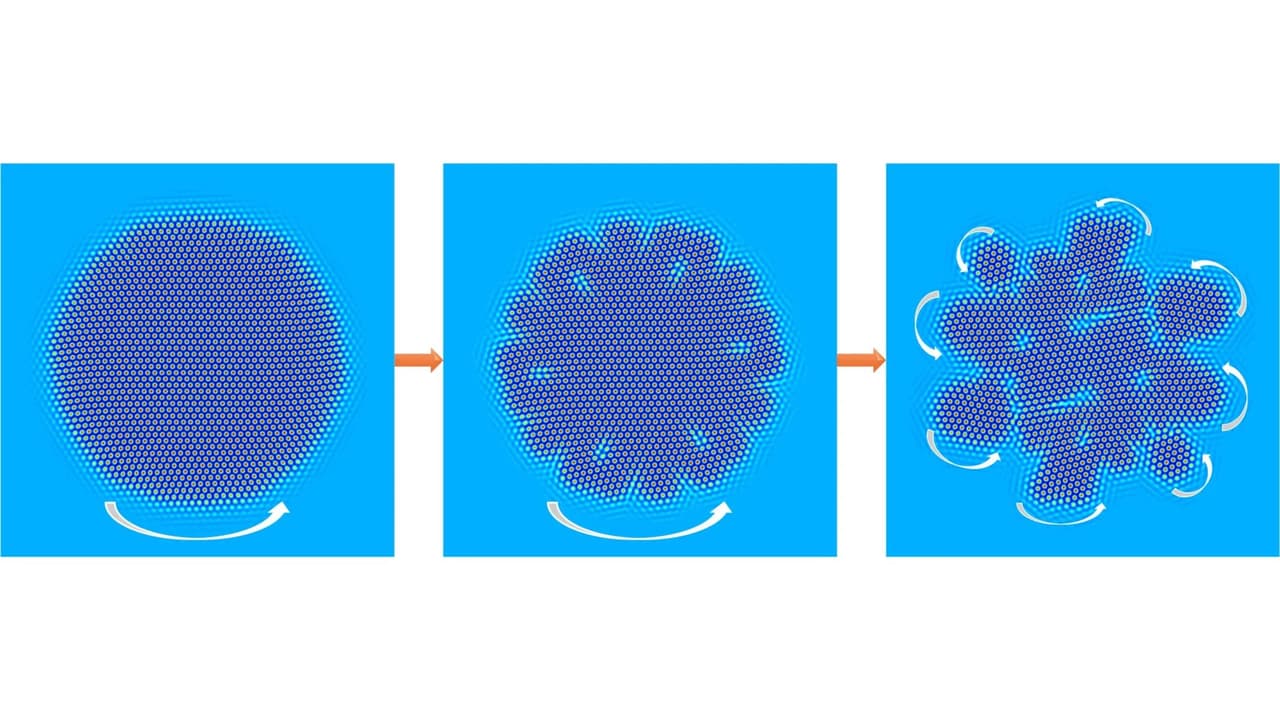Scientists have discovered rotating crystals with odd elasticity that twist, fragment, and self-reassemble, revealing new material properties with potential applications in biology, colloids, and next-generation materials.
Physicists have unveiled a fascinating class of materials: rotating crystals made of spinning particles that behave in ways almost reminiscent of living systems. These “odd” solids can twist rather than stretch, shatter into fragments, and even spontaneously reassemble themselves.
A New Kind of Crystal
Unlike conventional crystals that grow steadily under favorable conditions, these materials are governed by transverse interactions — forces that act perpendicular to the line connecting two particles. This unusual arrangement makes the crystals rotate, form unusual grain boundaries, and create controllable structural defects.
Professor Hartmut Löwen of Heinrich-Heine University explains: “At high concentrations, these rotating elements form a solid of rotors with ‘odd’ material properties, which behave very differently from standard crystals.”
Twisting, Breaking, and Reforming
One striking property of these crystals is odd elasticity. Normally, materials stretch when pulled. These new crystals, however, twist instead of stretching. Strong interactions among the spinning particles can also cause the solid to fragment into smaller spinning units, which can later reassemble into a coherent structure — almost as if the material were alive.
Modeling the Odd Crystals
A research team led by Professor Zhi-Feng Huang (Wayne State University) and Professor Löwen developed a multiscale theoretical model to predict these behaviors. Simulations revealed new patterns in crystal growth: large crystals tend to break into smaller spinning units, while small crystals grow until reaching a critical size, reversing the rules of conventional crystallography. The study was published in the Proceedings of the National Academy of Sciences (PNAS).
Potential Applications
The study suggests broad applications in colloid research, materials science, and biology. Controlling defects and rotations could lead to new technical switching elements or materials with tunable elastic properties. Co-author Dr. Michael te Vrugt adds: “Our theory could guide experiments to design new materials with specific, controllable behaviors.”
How Transverse Forces Work
Unlike gravity or Coulomb forces (central forces), transverse interactions act perpendicular to the central axis, causing particles to spontaneously rotate around each other. This dynamic underlies the unusual behavior of these crystals and opens doors to previously unseen material properties.
